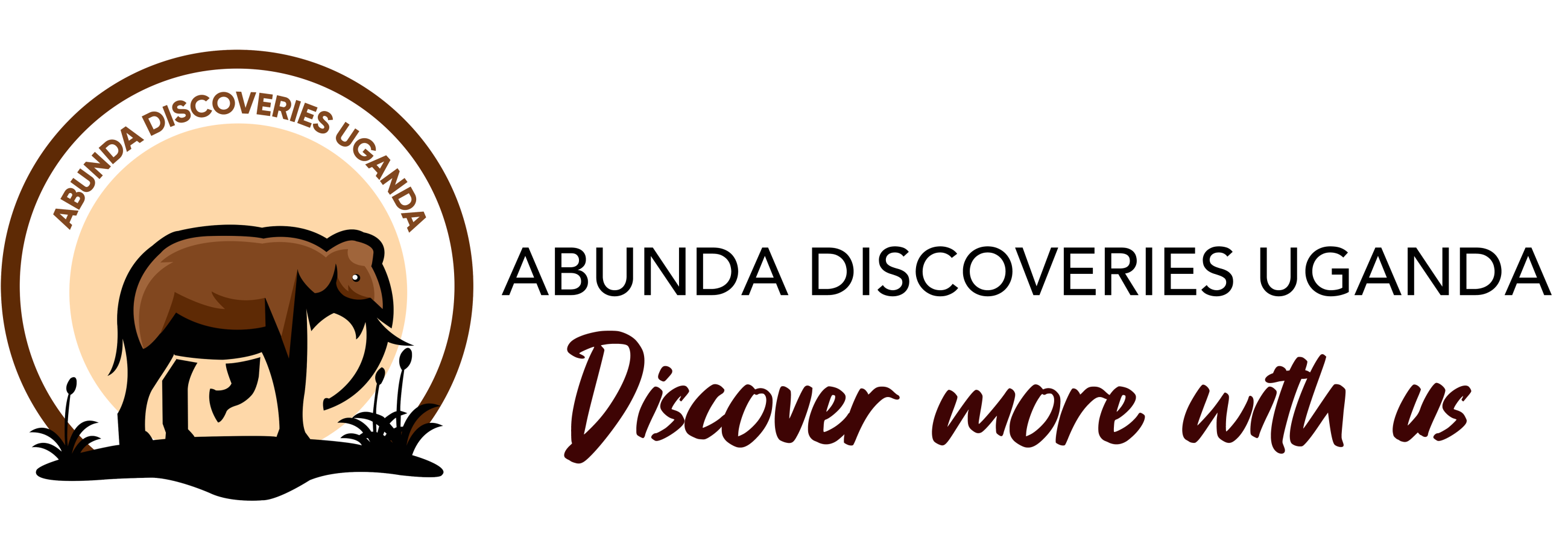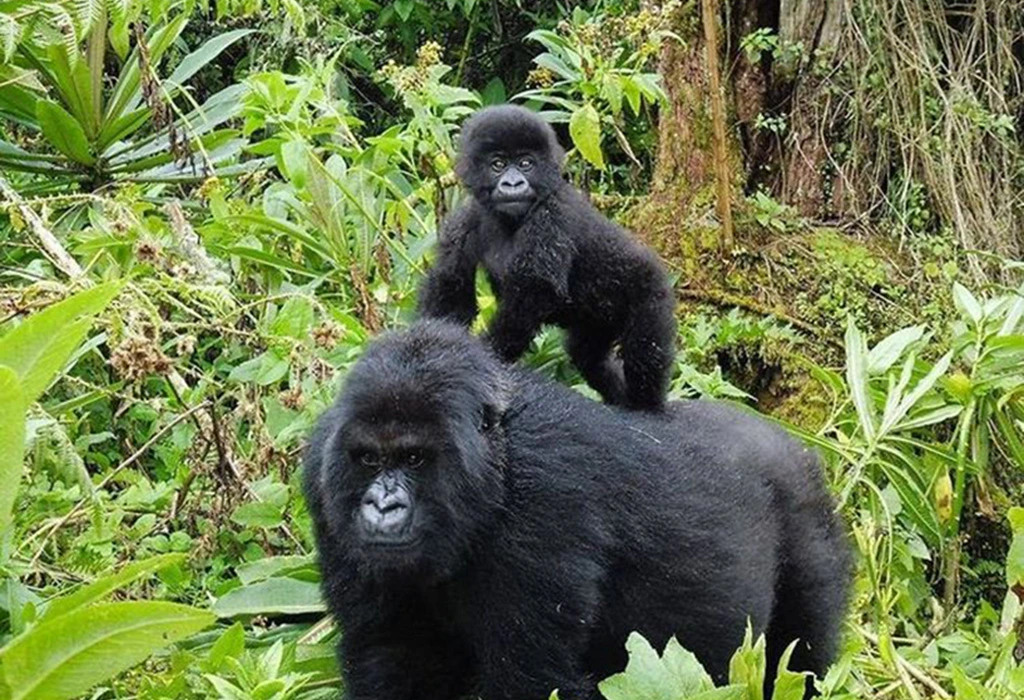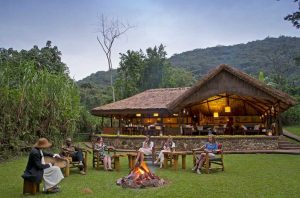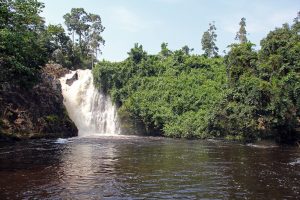Uganda is a land of breathtaking biodiversity. Notably, two of its most captivating destinations—Lake Mburo National Park and Bwindi Impenetrable Forest offer vastly different yet complementary experiences, all within a reachable distance. On one hand, Lake Mburo provides a quintessential savannah safari, featuring open plains teeming with zebras, impalas, and hippos. On the other, Bwindi offers an entirely different adventure one of misty rainforests and once in a lifetime gorilla trekking. How Far Is Lake Mburo National Park from Bwindi?
Whether you’re planning a thrilling gorilla trekking expedition or a classic wildlife safari, understanding the travel logistics between these parks is essential. In fact, efficient planning can significantly enhance your itinerary, ensuring you get the most out of your time in Uganda.
To help you navigate this journey seamlessly, we’ve compiled a comprehensive guide that addresses the most commonly searched questions related to traveling between Lake Mburo and Bwindi Impenetrable Forest. From real travel times and actual road conditions to transportation options and cost estimates, this guide delivers accurate, actionable insights that will make your East African adventure both smooth and unforgettable.
How Far Is Lake Mburo National Park from Bwindi Impenetrable Forest?
The distance between Lake Mburo National Park and Bwindi Impenetrable Forest can vary depending on your destination gate within Bwindi. While Lake Mburo lies in western Uganda, conveniently situated near the Masaka-Mbarara highway, Bwindi is nestled deeper in the southwestern highlands. On average, the distance between the two parks is approximately 240 kilometers (150 miles).
However, it’s important to note that Bwindi has multiple entrance gates such as Buhoma, Rushaga, Ruhija, and Nkuringo—and the route you take will influence both the total distance and travel time. For instance, traveling from Lake Mburo to the Buhoma sector might take around 5 to 6 hours by road, while reaching Rushaga or Nkuringo could extend the journey slightly, especially if road conditions are affected by weather or ongoing maintenance.
In summary, while the two parks are well within reach of each other, travelers should plan based on the exact sector of Bwindi they intend to visit. Factoring in road conditions, stopovers, and transport mode is crucial to ensuring a smooth transition between these two unique safari destinations.
- Distance via Mbarara–Ntungamo–Kabale–Buhoma route: Approximately 240–280 kilometers
- Travel time: Around 5 to 7 hours by road depending on weather, road conditions, and traffic
It is important to factor in whether you’re heading to the Buhoma, Rushaga, Nkuringo, or Ruhija sector of Bwindi, as this influences total travel time.
What Is the Best Route to Travel from Lake Mburo to Bwindi?
Most travelers use the road route, which is the only feasible option since there are no direct flights linking Lake Mburo to Bwindi.
Popular Road Routes:
- Lake Mburo to Buhoma Sector (Northern Bwindi):
- Route: Lake Mburo – Mbarara – Ntungamo – Rukungiri – Kihihi – Buhoma
- Approx. Distance: 260 km
- Time: 6–7 hours
- Lake Mburo to Rushaga/Nkuringo Sector (Southern Bwindi):
- Route: Lake Mburo – Mbarara – Kabale – Kisoro – Rushaga/Nkuringo
- Approx. Distance: 270–300 km
- Time: 6–8 hours (longer if rain affects the terrain)
Road Conditions:
- Tarmac roads exist between Lake Mburo and major towns like Mbarara, Ntungamo, and Kabale.
- The final approach to Bwindi, especially to Nkuringo or Rushaga, involves dirt and gravel roads, which can be rough and require 4WD vehicles.
What Is the Cost of Traveling from Lake Mburo to Bwindi?
Travel costs can vary depending on the means of transportation and whether you are booking a private safari or using public options.
1. Private Transfer Costs:
- 4WD vehicle rental with driver: $150–$200 per day (fuel included)
- Group tours: Some tour operators offer packages including transportation, meals, and accommodations
2. Public Transport (Less Recommended):
- Matatus (minibuses) or Buses: ~$15–$25 USD, but not direct
- Route: Lake Mburo (via Sanga or Lyantonde) → Mbarara → Kabale/Kisoro → Bwindi
- May require multiple transfers, time-consuming, and limited comfort
3. Tour Operator Packages:
- Many safari companies offer combination trips including both parks. Prices range from $400–$1000+ depending on number of days, accommodations, and gorilla permits.
What Can I See and Do in Lake Mburo Before Heading to Bwindi?
Before making your way to Bwindi, Lake Mburo offers a great introduction to Uganda’s wildlife.
Key Activities:
- Game Drives: Spot zebras, impalas, elands, giraffes, and buffaloes
- Boat Safaris on Lake Mburo: Crocodiles, hippos, and waterbirds
- Walking Safaris: One of Uganda’s only parks where walking safaris are allowed
- Horseback Safaris: Unique to Lake Mburo, explore wildlife without vehicle noise
Entrance Fees:
- Foreign Non-resident: $40 per person
- Guided activities: $15–$30 extra depending on the activity
Why Is Bwindi Impenetrable Forest So Special?
Bwindi Impenetrable Forest is world-renowned as one of the last remaining habitats of the endangered mountain gorilla. Tucked away in the misty highlands of southwestern Uganda, this UNESCO World Heritage Site is not only biologically rich but also offers one of the most profound wildlife encounters on Earth. Without a doubt, gorilla trekking in Bwindi is a bucket-list experience for nature lovers and adventure seekers alike.
In fact, Bwindi is home to nearly half of the world’s remaining mountain gorilla population. Visitors can hike through dense rainforest terrain—guided by experienced rangers—in search of habituated gorilla families. Once found, the reward is an awe-inspiring, one-hour observation window where you can witness these magnificent primates in their natural habitat: feeding, grooming, playing, and nurturing their young.
Ultimately, trekking in Bwindi offers more than just wildlife viewing; it provides a deep connection to conservation efforts, local communities, and the raw beauty of Uganda’s wilderness. For this reason, many travelers plan their entire East African itinerary around this once-in-a-lifetime opportunity.
Gorilla Trekking Experience:
- Permit cost: $800 for foreign non-residents (2025)
- Trek duration: 2–8 hours depending on gorilla location
- Difficulty: Moderate to strenuous
- Wildlife: Besides gorillas, the forest hosts 350 bird species, 120 mammals, and hundreds of butterflies
Four Sectors of Bwindi:
- Buhoma (North): Most accessible, oldest trail
- Rushaga (South): Many gorilla families, scenic views
- Nkuringo (Southwest): Challenging treks, less crowded
- Ruhija (East): Rich birdlife, hilly terrain
How Should I Plan My Itinerary from Lake Mburo to Bwindi?
Planning your Uganda safari itinerary requires thoughtful sequencing to minimize backtracking, reduce travel fatigue, and maximize your wildlife experience. Since distances between national parks can be deceptively long due to road conditions and terrain, a well-structured route is essential for maintaining energy and making the most of your time. Ideally, travelers should map their journey in a logical flow—for example, starting from Entebbe or Kampala, heading west to Lake Mburo National Park, and then continuing southwest to Bwindi Impenetrable Forest.
By organizing your itinerary efficiently, you not only save on transportation costs but also gain more time to explore Uganda’s extraordinary biodiversity. Moreover, incorporating rest stops or overnight stays in key transit towns like Mbarara or Kabale can break up the journey comfortably.
Sample 4-Day Itinerary:
Day 1: Arrive at Lake Mburo
- Afternoon game drive or boat safari
- Overnight in one of the budget/mid-range lodges
Day 2: Morning Safari & Transfer to Bwindi
- Early morning walking safari
- Depart by 10:00 AM for Bwindi
- Arrive by evening; overnight near trekking sector
Day 3: Gorilla Trekking in Bwindi
- Early breakfast and trek briefing
- Gorilla trekking experience
- Relax at the lodge or village walk
Day 4: Return to Kampala or Continue to Queen Elizabeth NP
- Optional transfer to Queen Elizabeth National Park or back to Entebbe/Kampala
What Should I Know About Safety and Travel Tips Between the Parks?
Uganda is generally safe for tourists, but there are practical considerations:
Safety Tips:
- Hire a professional driver or guide familiar with rural routes
- Travel during daylight; some roads are not well lit
- Check weather forecasts, especially during rainy seasons (March–May, Oct–Nov)
- Carry local currency (UGX) as ATMs may not be available in rural areas
Packing Tips:
- Hiking boots, rain jackets, insect repellent
- Reusable water bottles, snacks for the road
- Binoculars and cameras with extra batteries
Are There Accommodations Between Lake Mburo and Bwindi?
If the full journey is too long, consider an overnight stop halfway.
Options in Mbarara or Kabale:
- Igongo Cultural Center (Mbarara): Mid-range, cultural stop
- Cephas Inn (Kabale): Budget-friendly, good food
- Lake Bunyonyi nearby: Tranquil lake lodges if taking a detour
What Are the Best Times to Visit Both Parks?
Uganda’s equatorial climate allows for year-round travel, but some seasons are better than others.
Dry Season (June–September, December–February):
- Best for road travel and gorilla trekking
- Less muddy trails
Wet Season (March–May, October–November):
- Lush landscapes and fewer tourists
- Roads may become slippery; 4WD essential
Is It Worth Combining Lake Mburo and Bwindi in One Trip?
Absolutely, combining Lake Mburo National Park and Bwindi Impenetrable Forest creates a uniquely rich and diverse Ugandan safari experience. On one hand, you have Lake Mburo’s serene savannahs, dotted with acacia trees and home to zebras, impalas, and hippos. On the other, you encounter the dense, mist-shrouded jungle of Bwindi, a UNESCO World Heritage site and sanctuary for the elusive mountain gorillas. Together, they offer a dramatic contrast in landscapes and wildlife, showcasing the true ecological breadth of Uganda.
Of course, travel logistics between the two destinations require thoughtful planning. Distances in Uganda can be deceiving due to road conditions, terrain, and weather. However, the journey is not only feasible but also filled with scenic beauty and cultural immersion along the way.
So, how far is Lake Mburo National Park from Bwindi Impenetrable Forest? In real terms, the distance may feel significant, yet it is entirely manageable—especially for travelers seeking to maximize their safari adventure. Depending on your route, mode of transport, and exact entry points into Bwindi, the drive can range from 4 to 6 hours, covering approximately 220 to 280 kilometers. Still, with proper timing and guidance, this transition becomes a rewarding part of your Ugandan journey, rather than a mere transfer between parks.
Ultimately, if you plan well, this route becomes more than just a connection—it becomes an experience. From local villages and rolling hills to the anticipation of tracking mountain gorillas, the road from Lake Mburo to Bwindi represents the very heart of adventure travel in East Africa.




